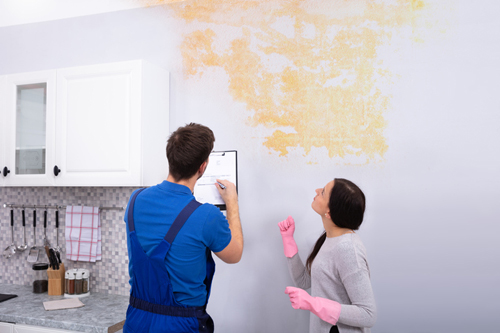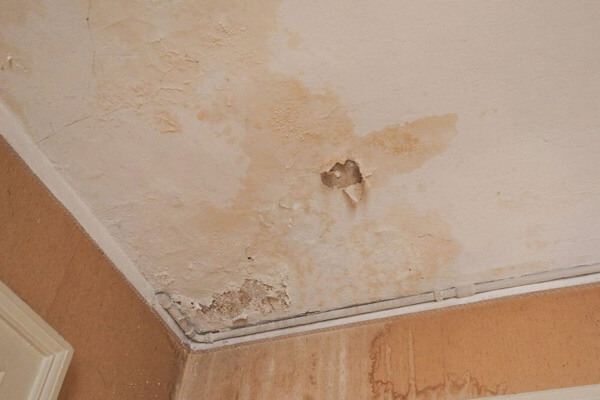The author is making several great points about Indicators of Water Damage Behind Walls overall in this content following next.

Water stains on wall surfaces are not enjoyable to the eyes. Occasionally it seems virtually unavoidable to experience water discolorations on walls in residences.
Home owners living in moist areas constantly deal with the fear of water spots on wall surfaces. With all-round and precise details on the reasons of water discolorations as well as prompt repair work processes, you will certainly constantly be an action ahead of such occurrences.
3 Typical Root Causes Of Water Discolorations on Wall Surfaces
Contrary to popular belief, water stains on walls do not always stem from poor building products. There are numerous sources of water discolorations on wall surfaces. These consist of:
Wet
When warm damp air meets with dry cold air, it causes water droplets to form on the walls of buildings. This happens in bathroom and kitchens when there is heavy steam from cooking or showers. The water droplets can tarnish the bordering walls in these parts of your house and also infect various other locations.
Moist or condensation affects the roof covering and also wall surfaces of buildings. When the wall is damp, it produces a suitable setting for the development of fungis as well as microbes.
Poor Water drainage
This will protect against water from leaking right into the walls. This web links to extreme moisture that you discover on the wall surfaces of your structure.
The leading cause of damp walls, in this instance, can be a bad water drainage system. It can likewise be because of inadequate management of sewer pipes that run through the structure.
Pipe Leaks
The majority of houses have a network of water pipelines within the walls. It constantly raises the practicality of such pipelines, as there is little oxygen within the wall surfaces.
Yet, a downside to this is that water leakage impacts the wall surfaces of the building as well as creates prevalent damage. A telltale sign of malfunctioning pipelines is the appearance of a water discolor on the wall surface.
Pro Tip
A houseplant in your home likewise boosts its humidity. If the home is currently moist, you might want to present houseplants with marginal transpiration. An instance of ideal houseplants is succulents.
Water Stains on Wall: Repair Work Tips
House owners would normally desire a quick fix when managing water discolorations. They would quickly recognize this is disadvantageous as the water stains reoccur. So, below are a couple of handy pointers that will certainly lead you in the fixing of water discolorations on wall surfaces:
- Always fix the source of water discolorations on wall surfaces
- Involve the assistance of expert repair services
- Technique routine sanitation and clean out blocked sewage systems
- When building a home in a waterlogged area, ensure that the workers perform correct grading
- Tiling locations that are prone to high condensation, such as the bathroom and kitchen, assists in minimizing the accumulation of moist
- Dehumidifiers are likewise useful in keeping the moisture levels at bay
Verdict
Although no person intends to have water spots on walls in their house, it can occur to the best of us. This write-up offers you take advantage of, as you now know just how to manage this mishap if it does take place.
It is constantly best to recruit professional solutions to aid take care of the damages in your home.
Occasionally it appears practically inevitable to experience water discolorations on wall surfaces in homes.
Contrary to prominent belief, water discolorations on wall surfaces do not always stem from inadequate structure materials. There are numerous reasons of water spots on walls. The water beads can discolor the bordering wall surfaces in these parts of your residence as well as spread to other locations.
Right here are a few handy ideas that will lead you in the repair service of water discolorations on walls:
CHECKING FOR WATER DAMAGE
Water damage can be costly, and it may begin before you even notice the first signs of trouble. Water damage can cause mold and mildew in your walls and floors, which can create an abundance of health concerns for your family. It can also lead to costly repairs of various appliances and general home fixtures. To avoid the pricey consequences of water damage, here are Warner Service’s top 5 places you should check:
- The walls – The easiest place to spot the beginnings of water damage is on the walls and ceilings of your home. If water damage is present, there will most likely be water stains, especially around the windows and doorframes, and/or cracks in the drywall. If a stain looks unusual (discolored to brown, black or gray, raised texture), has a swollen appearance or is soft to the touch, contact a professional immediately.
- The pipes – To avoid water damage, consistently check the pipes in your kitchen (especially the dishwasher and ice maker), bathrooms, laundry room (specifically washing machines) and basement for corrosion, leaks and water stains. Pay special attention to where the pipes connect in your home and the location of caulking around the bathroom fixtures, including toilets, sinks, showers and tubs. Missing or loose caulking and grout could be signs of leaking water. This seepage can also quickly cause mold and rust, so double check your water heater and tank for wet spots on the floor.
- The floor – Water damage is very easy to spot on the floor. Look for any warping or buckling of the material, especially in the basement. If your home has wood flooring, look for bright white or dark stains. If your home has carpeting, keep it dry and clean. A damp carpet that smells of mold could cause water damage and health problems. To avoid this, consider installing floor pans under your appliances to help prevent damages from small, slow and undetected leaks.
- The basement and attic – If your basement or attic smells odd check for mold and mildew around the area, especially the valley where the roof meets. While you are inspecting those areas, check for wall cracks, floor stains, rust and dampness in the insulation. If you live in a colder and/or rainier climate, perform routine checks for water damage from melting snow or ice and rain.
- The exterior – Check the roof for damaged flashing and missing, cracked or curled shingles. There should also be no standing water anywhere outside your home. This could be caused by puddles, leaky rain gutters or hoses, poor drainage, or short gutter spouts. Invest in a sump pump system or water flow monitoring system, and perform routine maintenance on these outdoor appliances to avoid indoor water damage.

We hope you liked our post about . Thanks a lot for spending some time to read our piece of content. Sharing is nice. Helping people is fun. I thank you for reading our article about .
Get A Quote
Comments on “Clearing Water Marks - Comprehensive Wall Stain Checks And Repairs”